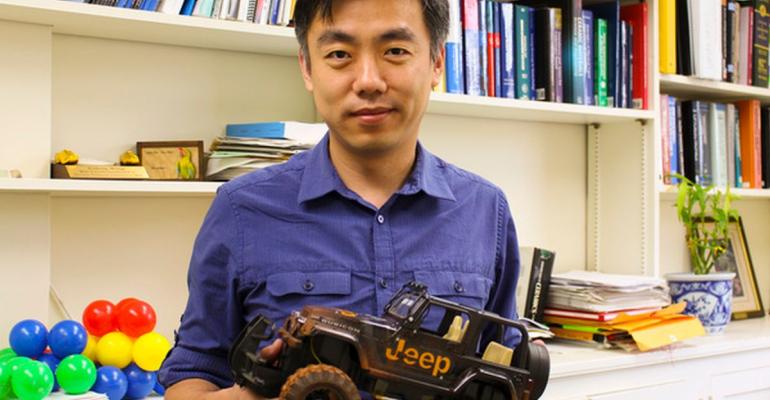A nanogenerator that collects energy from a car’s rolling tire friction has the potential to give automakers a new way to squeeze greater energy efficiency out of their vehicles.
Xudong Wang, an associate professor of materials science and engineering at the University of Wisconsin-Madison, and his student Yanchao Mao have been working on the device for about a year.
Their report in the research journal Nano Energy says their innovative method of reusing energy relies on a triboelectric effect to harness energy from the changing electric potential between the pavement and a vehicle’s wheels.
The triboelectric effect is the electric charge that results from the contact or rubbing together of two dissimilar objects.
Wang says the nanogenerator provides an excellent way to take advantage of energy that is usually lost due to friction.
“The friction between the tire and the ground consumes about 10% of a vehicle’s fuel,” he says in a statement. “That energy is wasted. So if we can convert that energy, it could give us very good improvement in fuel efficiency.”
The nanogenerator relies on an electrode integrated into a segment of the tire. When this part of the tire surface comes into contact with the ground, the friction between those two surfaces produces the electrical charge. The charge is captured by the electrode and transmitted to the nanogenerator on board the vehicle, which stores it as energy.
During initial trials, Wang used a toy car – a remote-control Jeep Wrangler – with LED lights to demonstrate the concept. He attached an electrode to the wheels of the car, and as it rolled across the ground the LED lights flashed on and off.
The movement of electrons caused by friction was able to generate enough energy to power the lights, supporting the idea that energy lost to friction can be collected and reused.
“Regardless of the energy being wasted, we can reclaim it, and this makes things more efficient,” Wang says. “I think that’s the most exciting part of this, and is something I’m always looking for: how to save the energy from consumption.”
The team has found the amount of energy harnessed is directly related to the car’s weight, as well as its speed. Thus the amount of energy saved can vary depending on the vehicle, but Wang predicts about a 10.4% increase in the average vehicle’s gas mileage, given a 50% friction energy conversion efficiency.
“There’s big potential,” he says. “I think the impact could be huge.”



